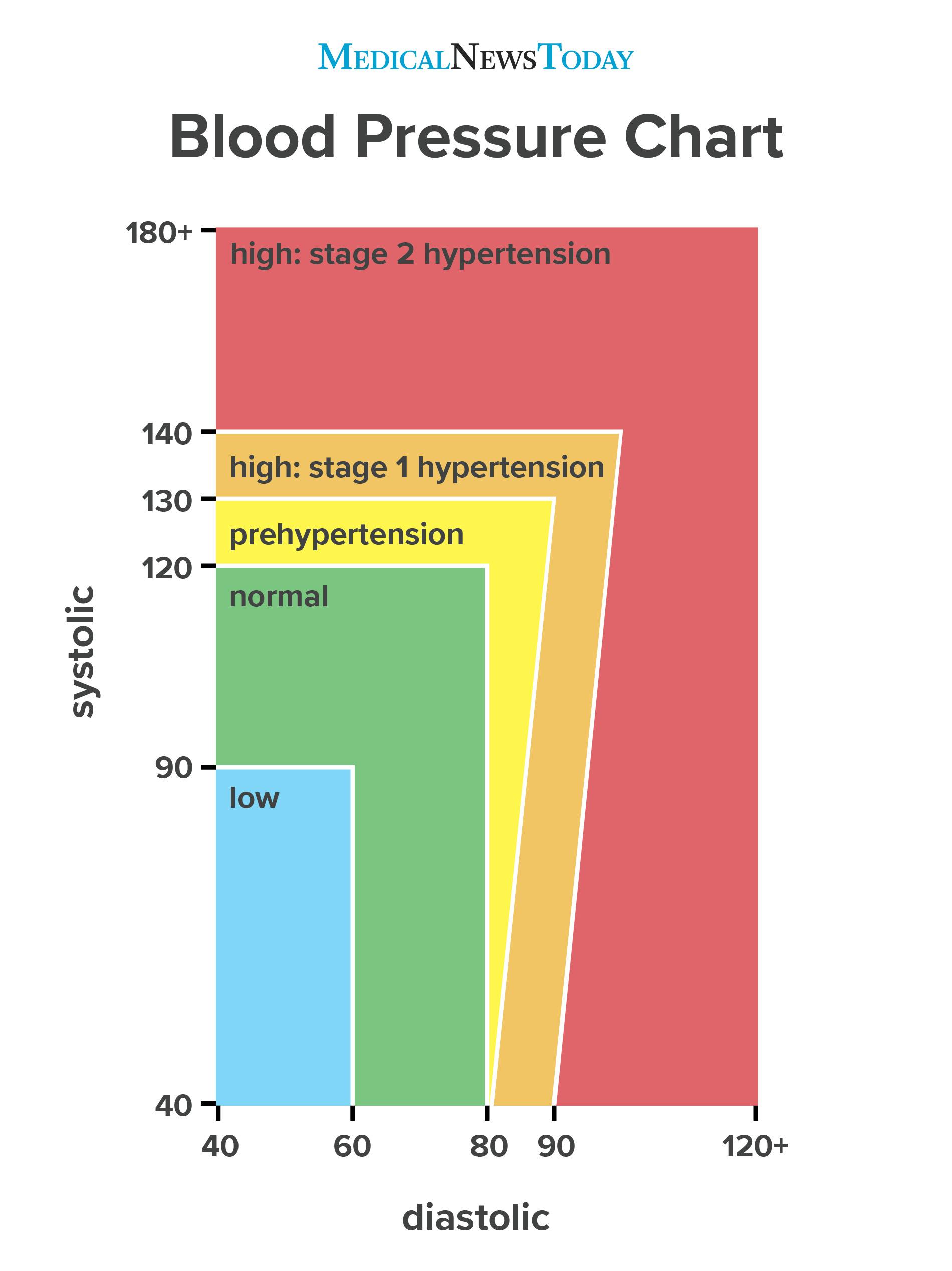Blood pressure is the force of a person’s blood pushing against their artery walls. A person’s blood pressure can become too low or too high. When it becomes too high, it can lead to potential health complications.
Often, people do not experience symptoms of high blood pressure, or hypertension. This means that it is important for people to get their blood pressure checked regularly, particularly if they are older or have a history of heart complications.
High blood pressure can also lead to other complications, such as:
This article explains everything that a person needs to know about blood pressure readings and what they mean.

A blood pressure measurement involves two numbers that indicate the amount of pressure the blood is exerting against the arteries’ walls.
- Systolic: This is the first number. This indicates the amount of pressure that the blood exerts against the artery walls as the heart contracts.
- Diastolic: This is the second number. This shows the amount of pressure that the blood exerts against the artery walls as the heart relaxes.
Both numbers are equally significant because they provide insight into a person’s heart health. However, doctors and healthcare professionals often give systolic blood pressure more attention as they consider it a major risk factor for cardiovascular disease in some people.
Blood pressure refers to the force of blood against the artery walls, whereas a person’s pulse indicates the number of times the heart beats per minute.
A resting heart rate is when a person is sitting, lying down, or not engaged in an activity.
An active heart rate is when a person is exercising or engaged in physical activity.
Everyone has a slightly different resting heart rate, but the average rate is between 60 and 100 beats per minute. A physically active person may have a heart rate as low as 40 beats per minute.
Similarly to blood pressure, a person’s heart rate or pulse indicates how healthy the heart is.
According to the American Heart Association (AHA), a normal blood pressure range is lower than 120/80 millimeters of mercury (mm Hg). When a person’s blood pressure is higher than the normal range, they may have elevated blood pressure or hypertension.
A person’s blood pressure can also drop too low. A lower than normal blood pressure can also lead to health issues.
If it drops too low, a person may feel faint, lightheaded, or dizzy. If a person has consistently low readings, they should talk to their doctor.

There are five categories of blood pressure:
Normal range
According to the AHA, a normal blood pressure reading is no more than 120/80 mm Hg. Consistently higher numbers may mean a person has elevated blood pressure or hypertension.
Elevated range
An elevated blood pressure range occurs when a person has a systolic reading of between 120–129 and a diastolic reading below 80.
A person with elevated blood pressure is more likely to develop hypertension unless they take steps to lower it.
Hypertension: Stage 1
A person who has stage 1 hypertension consistently has blood pressure readings of between 130–139 systolic and 80–89 diastolic.
A doctor will likely advise a person to make lifestyle changes and may also prescribe blood pressure medication to reduce the risk of having a heart attack or stroke.
Hypertension: Stage 2
A person who has stage 2 hypertension consistently has blood pressure readings that are around 140/90 mm Hg or higher.
A person will likely need to take blood pressure medication and make lifestyle changes to help lower their blood pressure.
Hypertensive crisis
A hypertensive crisis occurs if a person suddenly has a blood pressure reading of 180/120 mm Hg. If this occurs, a person should wait for 5 minutes and remeasure their blood pressure. If the readings are still high, seek medical help from the doctor.
A person may be experiencing organ damage if the readings are high, and they develop these symptoms:
- shortness of breath
- numbness or weakness
- change in vision
- chest pain
- back pain
- difficulty speaking
If a person experiences these symptoms, they should call 911 immediately.
If someone is experiencing a hypertensive crisis, along with signs of organ failure, they should seek emergency medical help.
A person with a history of heart disease, heart attack, stroke, or other cardiac issues should regularly see their doctor for blood pressure checks. They may also want to check their pressure at home regularly.
A person should see their doctor if their blood pressure is higher than the normal readings to understand what the cause is and how to treat it.
People measure blood pressure using two numbers that represent the pressure the blood exerts on the arteries as the heart contracts and relaxes.
Doctors consider a person’s blood pressure to be in the normal range when they have readings consistently below 120/80.
Higher readings can indicate a person has elevated or hypertension. If left untreated, this can lead to cardiac issues.
A person can make changes in their diet and exercise regime to help keep their blood pressure under control.
Source link
 Black America Breaking News for the African American Community
Black America Breaking News for the African American Community